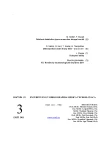The osteosynthesis of the psoterior edge of the tibia – yes or no?
Authors:
David Náhlík; Radek Hart; Tomáš Kozák; Boris Těknědžjan
Authors‘ workplace:
Department of Orthopaedics and Traumatology General Hospital Znojmo
; Ortopedicko – traumatologické oddělení Nemocnice Znojmo p. o.
Published in:
Úraz chir. 19., 2011, č.3
Overview
PURPOSE OF THE STUDY:
To show the relevance and importance of the posterior edge of the tibia in treatment as the prevention of the ankle posttraumatic arthrosis and chronic tibiofibular instability.
MATERIAL AND METHODS:
Prospective study was conducted in the period from June 2006 to June 2008, with the total of 48 patients with diagnosed fracture of the posterior edge of the tibia. Surgical treatment of 18 patients was performed and evaluated with Foot and Ankle Outcome Score (FAOS) as the assessment of treatment effect.
RESULTS:
FAOS assessment of 18 patients with surgical treatment of the posterior edge of the tibia: 16 patients (88,9 %) received more than 90 points and 2 patients (11,1 %) 80-90 points at six months follow-up. 17 patients (94,4 %) received more than 90 points and 1 patient (5,6 %) got 80-90 points in one year after the surgical treatment. No arthrosis and no bone cysts of the posterior edge of the tibia in cases after surgical treatment were observed.
CONCLUSIONS:
As prevention of the ankle posttraumatic arthrosis and chronic tibiofibular instability the restoration of the congruence of the joint surface, right lenght and axis of the fibula, the treatment of the rupture of the tibiofibular syndesmosis and the stable osteosynthesis of the posterior edge of the tibia is necessary. If the posterior edge of the tibia isn´t correctly treated, the congruence of the joint surface is disrupted and bone cysts frequently develop in this region after the union. The chronic subluxation of the fibula and talus can occur too. All these factors contribute to arthrosis development pain, movement limitation of the talocrural joint and the decrease of the patients quality of life.
Key words:
ankle fracture, posterior edge of the tibia, ankle arthrosis, chronic tibiofibular instability.
Sources
1. BARTONÍČEK J., HEŘT J. Základy klinické anatomie pohybového ústrojí. Praha: Maxdorf, 2004. 256 s. ISBN 80-7345-017-8.
2. BARTONÍČEK, J., Avulsed posterior edge of tibia. J Bone Joint Surg. 2004, 86-B, 746–750.
3. BÜCHLER L., TANNAST M., BONEL HM, WEBER M. Reliability of radiologic assessment of the fracture anatomy at the posterior tibial plafond in malleolar fractures. J Orthop Trauma. 2009, 23, 208–212.
4. ČECH O. a spol. Stabilní osteosyntéza v traumatologii a ortopedii. Praha: Avicenum, 1982. 2. vyd. 307 s.
5. DUNGL, P. Ortopedie a traumatologie nohy. Praha: Avicenum, 1989. 1.vyd. 288 s.
6. FOOT AND ANKLE OUTCOME SCORE (FAOS), ENGLISH VERSION LK1.0. Dostupná z WWW: http://www.koos.nu/FAOSEng.pdf.
7. HARPER, MC., HARDIN, G., Posterior malleolar fracture of the ankle associated with external rotation-abduction injuries, Result with and without internal fixation. J Bone Joint Surg. 1988, 70, 1348–1356.
8. HARPER, MC. Posterior instability of the talus: an anatomic evaluation. Foot Ankle. 1989, 10, 36–39.
9. HART R., JANEČEK M., BUČEK P., VIŠŇA P. Standartní rekonstrukční operace na noze u poúrazových stavů. Slov Chirurg. 2002, 2, 18–25.
10. LOUNSBURY, B.F., METZ, A.R. Lipping fracture of lower articular end of tibia. Arch Surg. 1922, 5, 678–690.
11. MACKO, VW., MATTHEWS, LS., ZWIRKOSKI, P. and GOLDSTEIN, SA. The joint-contact area of the ankle. The contribution of the posterior malleolus, J Bone Joint Surg. 1991, 73, 347–351.
12. McDANIEL, WJ, WILSON, FC. Trimalleolar fractures of the ankle. An end result study. Clin Orthop Relat Res. 1977, 122, 37–45.
13. McLAGHLIN, H.L. Injuries of the Ankle. In: Trauma. 357–360. Edited by H.L.McLauglin. Philadelphia. W. B. Saunders. 1959.
14. MILLER, AN, CAROLL, EA, PARKER, RJ, HEL-FET, DL, LORICH, DG. Posterior malleolar stabilization of syndesmotic injuries is equivalent to screw fixation. Clin Orthop Relat Res. 2010, 468, 1129–1135. Epub 2009 Oct 2.
15. NELSON, M.C., JENSEN, N.K. The treatment of trimalleolar fractures of the ankle. J Surg Gynec and Obstet. 1940, 71, 509–514.
16. POKORNÝ, V. a kol. Traumatologie. Praha: Triton, 2002. 307 s. ISBN 80-7254-277-X.
17. RAASCH, WG., LARKIN, JJ., DRAGANICH, LF. Assessment of the posterior malleolus as a restraint to posterior subluxation of the ankle. J Bone Joint Surg Am. 1992, 74, 1201–1206.
18. SOSNA, A., ČECH, O., KRBEC, M. Operační přístupy ke skeletu končetin, pánve a páteře. Praha: Triton, 2005. 239 s. ISBN 80-7254-640-6.
19. STREUBEL, P.N., McCORMICK, J.J., GARDNER, M.J. The posterior malleolus: should it be fixed and why? Current Orthopedic Practice. 2011, 22, 17–24.
20. TYPOVSKÝ, K. a kol. Traumatologie pohybového ústrojí. Praha: Avicenum. 1981. 2 vyd. 552 s.
21. WEBER M. Trimalleolar fractures with impaction of the posteromedial tibial plafond: implications for talar stability. Foot Ankle Int. 2004, 25, 716–727.
Labels
Surgery Traumatology Trauma surgeryArticle was published in
Trauma Surgery

2011 Issue 3
- Metamizole vs. Tramadol in Postoperative Analgesia
- Metamizole at a Glance and in Practice – Effective Non-Opioid Analgesic for All Ages
- The Importance of Hydration in Wound Healing
- Obstacle Called Vasospasm: Which Solution Is Most Effective in Microsurgery and How to Pharmacologically Assist It?
- Possibilities of Using Metamizole in the Treatment of Acute Primary Headaches
Most read in this issue
- Upon a detachment of the distal biceps brachii musculus
- The osteosynthesis of the psoterior edge of the tibia – yes or no?
